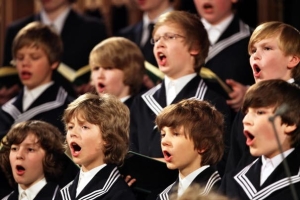Okay, so the idea is simple enough, right– separate different voice parts into their own sections in various areas around the room or building, and they can rehearse ALL of the details you could have in the same time together with only ONE of them in a full ensemble setting. It’s a miracle rehearsal tool!!!
Providing absolutely no context or details, a non-musician ignorant of rehearsal practices would scoff at the idea of this actually working. Or would they?
In many collaborative professions, specialized teams or units work independently of each other until certain planned points of interaction– sometimes with a couple of groups only and then on occasion with everyone together. For example, the idea that the entire team building the iPhone would work in one room together for 9 straight months on a new version of the iconic smartphone seems, well, less than efficient.
I use sectionals a few times each week, more so with my advanced ensembles than my intermediate or beginning ones. Not only can sectionals be efficacious time savers, but they can also provide additional benefits:
- Promoting Student Leadership
- Developing Independent Musicianship
- Utilizing Higher Level Thinking Skills
- Encouraging Self-Analysis and Problem Solving
If you’ve never made sectionals a part of your ensemble’s routine, I’d like to suggest some steps to take help for their successful integration.
- Empower student skill sets before throwing them into a sectional. If a sectional involves reading mixed meter, make sure they can read the mixed meter rhythms like the back of their hands before going on their own. If there is chromatic sight singing on fi and si, be sure to include those in your warmups. You get the idea.
- Identify leaders and train them. Share your expectations with them on a daily basis. Thoroughly explain the “WHYS” behind your musical instructions, and do it often. When I stop during an ensemble rehearsal, nine times out of ten now I will simply ask, “Why did I stop”, and students will correctly answer.
- Set students up for success. By this, I mean you need to be realistic in regards to scope. You can’t expect 6 independent sections of less educated, less experienced, less mature musicians to get as much done in a particular amount of time as you could leading them.
- Provide immediate opportunities for reinforcement and collaboration. I almost always bring my students back together for a joint rehearsal after a sectional. It provides closure, confidence, and cohesion.
For example, if I were rehearsing Hark I Hear The Harp’s Eternal arr. Parker/Shaw, I would hold a sectional starting at m. 13 because it is the first time all parts enter. Otherwise, I’d have Tenor 1’s sitting around bored (and likely getting in trouble)!
Be creative. Sectionals are only as risky as you set them up to be. With the proper planning, they can be incredibly useful to any ensemble as they seek to make great music.
What are your thoughts on sectionals? Do you use them? Hate them? Why?
As always, if you have any questions, please feel free to post them below in the comments!

